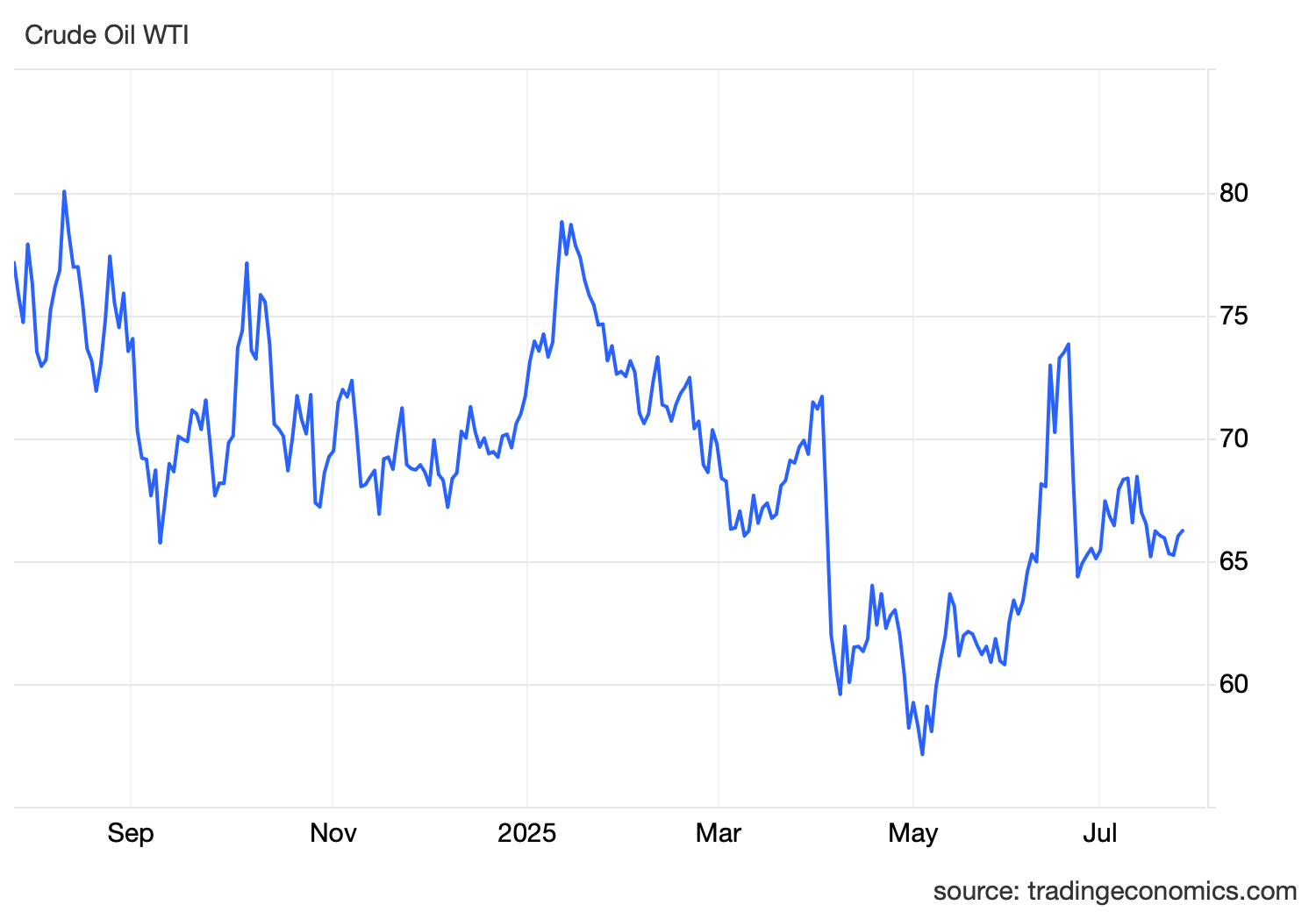Crude Oil Prices Rise as Trade Optimism and Supply Risks Support Market
West Texas Intermediate (WTI) crude futures rose above $66 per barrel on Friday, continuing their upward momentum for a second consecutive session amid growing optimism surrounding global trade negotiations and renewed concerns about supply-side disruptions. The price recovery marks a notable reversal from earlier weakness driven by global economic uncertainty and excess inventories. At the heart of this rebound is a combination of easing trade tensions, particularly those involving the United States and its key partners, and escalating geopolitical risks that threaten oil exports and global diesel availability.
A major catalyst behind Friday’s rally was market optimism stemming from reports that the United States and the European Union are close to finalising a landmark trade agreement. The anticipated deal includes the imposition of a uniform 15% tariff on a wide range of EU-manufactured goods, mimicking recent arrangements made with Japan. In addition to the EU, the U.S. is reportedly exploring similar trade accords with India, Mexico, and Brazil. While such tariffs might traditionally be seen as restrictive, markets interpreted the framework as a stabilising factor in global trade relations—reducing the unpredictability of ad hoc protectionist measures and suggesting a new rules-based foundation for transatlantic commerce.
This evolving trade backdrop is critical for oil demand outlooks. Improved diplomatic and trade relations are expected to support global economic activity, particularly in the manufacturing, construction, and transport sectors, all of which are energy-intensive. The International Energy Agency (IEA) has noted in past updates that trade normalization, especially among G20 nations, often correlates with higher cross-border freight activity and increased industrial output, both of which are key demand drivers for crude and refined products. Accordingly, the current improvement in sentiment has helped ease recent concerns over softening global oil demand growth for the latter half of 2025.
On the supply side, several developments have tightened the global oil and diesel markets. Chief among them is the European Union’s renewed enforcement of sanctions on Russian energy exports, with particular focus on refined petroleum products such as diesel. These restrictions have led to elevated diesel prices across the continent, placing additional strain on logistics and manufacturing sectors. Compounding this situation, Russia temporarily suspended crude exports from its Black Sea ports due to unspecified logistical and technical disruptions, further limiting near-term supply availability.
These events occur against a broader context of rising geopolitical tension. The U.S. and EU are reportedly evaluating the imposition of additional sanctions aimed specifically at Russian energy infrastructure and export routes. If enacted, these sanctions could further disrupt supply chains, with knock-on effects on global refining capacity, shipping rates, and regional fuel security—especially in Central and Eastern Europe. Moreover, the temporary closure of Russian Black Sea terminals—key conduits for Urals-grade crude—has already sparked rerouting efforts, increasing shipping times and costs for alternative suppliers.
The net impact of these factors is a reinforced bullish tone in oil markets. While WTI has settled above $66 per barrel, Brent crude has also edged higher, reflecting global alignment in pricing direction. Analysts from Goldman Sachs and JP Morgan have revised their short-term crude forecasts upward, citing an improved demand outlook and tighter-than-expected refined product inventories. According to preliminary estimates from the Energy Information Administration (EIA), U.S. crude inventories fell by 3.8 million barrels last week, further amplifying the perception of a tightening market.
Despite these gains, risks remain. A sharper-than-expected slowdown in China’s industrial output or further monetary tightening by major central banks could weaken demand growth. Additionally, if the U.S.-EU trade deal fails to materialize or spurs retaliatory tariffs from other regions, the recent optimism could quickly unwind. Nonetheless, in the near term, markets are largely focused on the favorable trade developments and supply-side constraints that are combining to lift crude prices.
In conclusion, WTI crude’s rally above $66 reflects a confluence of factors: improved global trade sentiment, strategic realignments in energy geopolitics, and a progressively tighter diesel and crude supply outlook. As negotiations evolve and sanctions regimes intensify, oil markets are likely to remain volatile, with pricing trajectories influenced as much by diplomacy as by macroeconomic fundamentals.
Sources
S&P Global Commodity Insights. (2025). WTI and Brent Daily Price Summary.
U.S. Department of Energy, EIA. (2025). Weekly Petroleum Status Report. [https://www.eia.gov/petroleum/supply]
International Energy Agency. (2025). Oil Market Report – July Update. [https://www.iea.org/reports/oil-market-report]
Reuters. (2025). Russia Halts Black Sea Oil Exports Amid Infrastructure Disruptions.
Bloomberg. (2025). US-EU Trade Pact Talks Advance; Markets React Positively.
